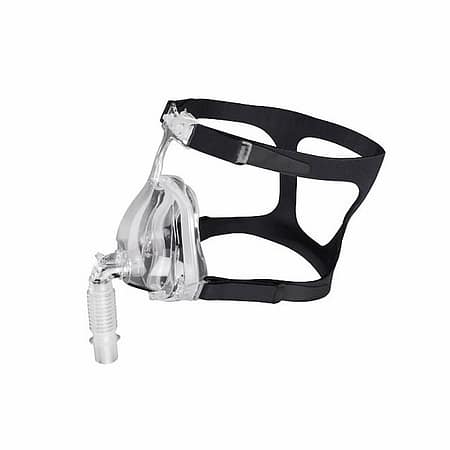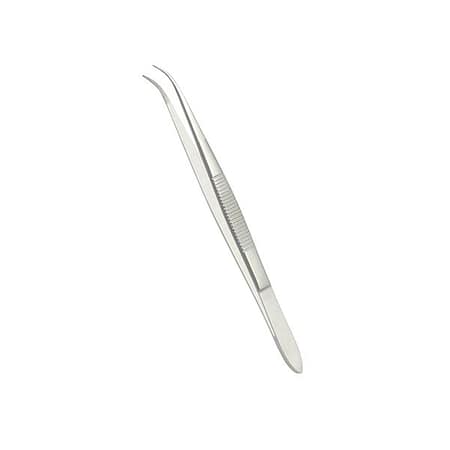Essential Items for a Comprehensive First Aid Kit

What should be included in a first aid kit?
Introduction
A comprehensive first aid kit is an indispensable asset in managing emergencies, capable of significantly mitigating the severity of injuries and preventing infections until professional medical help is available. From minor accidents in the home or workplace to unforeseen incidents during travel, having a well-stocked first aid kit provides immediate resources to address wounds, burns, sprains, and other common injuries effectively. By equipping yourself with essential supplies such as adhesive bandages, sterile gauze, antiseptics, and specific medications, alongside tools like scissors and tweezers, you ensure preparedness for a wide range of situations.
Regular maintenance of your kit, including checks for expired items and replenishment of used supplies, further guarantees its reliability in critical moments. Understanding the fundamental components of a first aid kit and tailoring its contents to fit personal or family health needs can significantly enhance your ability to provide prompt and efficient care during emergencies.
Understanding First Aid Kits
The Purpose of a First Aid Kit
A first aid kit is essential for providing a quick response to emergencies, enabling immediate intervention to manage injuries or health issues until professional help is available. It plays a crucial role in reducing the risk of infection and the severity of injuries, ensuring that minor issues can be addressed promptly to prevent them from becoming major complications.

Types of First Aid Kits
Understanding the different types of first aid kits is crucial for ensuring you have the right supplies for various situations, whether at home, in the workplace, or while traveling. Each kit serves a unique purpose and is tailored to meet the specific needs of its intended environment, making it essential to choose wisely based on where and how it will be used.
Home and Family Kits are designed to address the everyday injuries and health issues that can occur in domestic settings. These kits should include a range of supplies for cuts, scrapes, minor burns, and sprains, as well as medications for common ailments like fever, pain, and allergic reactions. Essential items include:
- Adhesive bandages of various sizes
- Sterile gauze pads
- Antiseptic wipes and creams
- Over-the-counter pain relievers and antihistamines
- Thermometer
Workplace Kits need to cater to a broader range of scenarios, considering the different risks present in various work environments. In addition to the basics found in home kits, workplace kits often contain items for more significant injuries and should be compliant with local health and safety regulations. Key components include:
- Larger quantities of basic supplies
- Burn dressings
- Eye wash solutions
- Splints
- CPR face shield
Travel Kits are compact and lightweight, designed to be easily portable while still containing essential items to manage common travel-related health issues, including motion sickness, minor injuries, and exposure to new environments. Travel kits should be adapted to the destination, taking into account the availability of medical resources and specific health risks. Important items to include are:
- Basic first aid supplies (bandages, gauze, antiseptic)
- Motion sickness medication
- Water purification tablets
- Insect repellent
- Sunscreen and after-sun care
Customising your first aid kit is essential to ensure it meets the unique health requirements of yourself and those around you, especially when considering allergies, chronic conditions, and specific environments. Tailoring your kit means including not just the standard items like adhesive bandages, antiseptics, and basic tools, but also incorporating specific medications for allergy relief, asthma control, or any prescription medications required by family members.
Additionally, consider the inclusion of items like epinephrine auto-injectors for severe allergic reactions or glucose gels for those with diabetes. By carefully selecting contents that address a broad spectrum of needs, including those dictated by individual health issues and the activities you commonly engage in, your first aid kit becomes a more effective resource for providing immediate and appropriate care in emergencies, ultimately ensuring safety and wellbeing for everyone involved.
Essential Components of a First Aid Kit
Basic Supplies: A core selection of adhesive bandages, sterile gauze, and adhesive tape is crucial for dressing wounds, covering minor cuts, and preventing infection, serving as the foundation of any effective first aid kit.
Tools and Equipment: Essential tools including scissors for cutting bandages or clothing, tweezers for removing debris from wounds, safety pins for securing bandages, and a thermometer for monitoring fevers are indispensable for addressing a wide range of emergencies.
Cleansing and Protection: Keeping wounds clean is vital, necessitating the inclusion of antiseptic wipes and saline solution for washing out injuries, along with antibacterial ointment to prevent infection and promote healing in cuts and scrapes.
Specialised Items: For more specific emergencies, having instant cold packs for reducing swelling, emergency blankets for retaining body heat in shock situations, and finger splints for immobilising injured digits can significantly enhance the utility of your first aid kit.

Medications to Include
Over-the-Counter Medications: It’s essential to stock your first aid kit with a range of over-the-counter medications, including pain relievers (like paracetamol or ibuprofen), antihistamines for allergic reactions, and anti-inflammatory drugs to address symptoms of swelling and discomfort.
Prescription Medications: Incorporating personal or family-specific prescription medications into your first aid kit can be crucial, especially for managing chronic conditions or specific medical needs. Ensure these are regularly checked for expiration and refilled as needed.
Allergy and Asthma Management: For individuals with known allergies or asthma, including epinephrine auto-injectors (for severe allergic reactions) and inhalers in your first aid kit is vital. These items can be life-saving in emergency situations and should be readily accessible.
First Aid for Specific Conditions
Effective first aid for specific conditions is crucial for mitigating the severity of injuries and promoting faster recovery. By understanding and applying the right techniques and procedures, you can provide essential care in critical moments.
Wound Care and Bandaging Techniques: Proper wound care is fundamental in preventing infection and promoting healing. Key steps include:
- Cleaning: Gently rinse the wound with water or saline solution to remove debris.
- Disinfecting: Apply antiseptic wipes or solutions to reduce the risk of infection.
- Bandaging: Use sterile gauze and adhesive tape to cover the wound, ensuring the bandage is snug but not too tight to compromise circulation.
Responding to Burns and Scalds: Immediate and appropriate action can significantly impact the healing process of burns. Essential first aid steps include:
- Cooling: Run cool (not cold) water over the burn for at least 20 minutes to reduce pain and swelling.
- Covering: Gently cover the burn with sterile gauze or a clean cloth to protect the area from infection.
- Avoiding: Do not apply ice, butter, or creams to burns, as these can cause further damage.
Handling Sprains and Fractures: Recognizing and properly responding to sprains and fractures can prevent further injury and aid in recovery. Important considerations include:
- Immobilisation: Use splints or bandages to immobilize the affected area, reducing movement and strain.
- Elevation: Keep the injured limb elevated to decrease swelling and pain.
- Seeking Professional Help: If a fracture is suspected, or if the sprain is severe, seek medical attention immediately to ensure proper treatment and healing.
By keeping these guidelines in mind and incorporating the necessary supplies into your first aid kit, you can be prepared to effectively address wounds, burns, sprains, and fractures, providing crucial care when it matters most.
Maintaining Your First Aid Kit
Regular Checks and Replenishment
It’s crucial to periodically inspect your first aid kit, ensuring all items are within their expiration dates and replenishing supplies that have been used or have deteriorated over time. This ensures your kit remains ready and effective for when emergencies arise.
Keeping Your Kit Accessible but Safe
Store your first aid kit in a location that is easily accessible to adults but out of reach of children. This balance ensures that the kit can be quickly retrieved during an emergency while preventing accidental misuse by children, maintaining both safety and readiness.
Conclusion
A comprehensive first aid kit is vital for ensuring you can respond effectively to emergencies, reducing the risk of complications and promoting quicker recovery. Regularly update and maintain your kit to cater to the specific health needs of your household or workplace. Always be prepared for any situation by keeping a well-stocked first aid kit ready at all times.

Additional Resources
Ensuring you have the knowledge and supplies to effectively manage emergencies is crucial for safety and wellbeing. To this end, equipping yourself with quality first aid training and reliable supplies is essential. Here’s how you can achieve that:
Reputable First Aid Courses: Gaining practical first aid skills through certified courses can significantly enhance your ability to respond confidently to a variety of emergencies. Consider enrolling in courses offered by:
- St John Ambulance: Known for comprehensive training that covers a wide range of first aid scenarios, including CPR and emergency response.
- Red Cross: Offers detailed courses in first aid, CPR, and automated external defibrillator (AED) use, suitable for both individuals and professionals.
- Local Community Centres: Often host first aid workshops that can provide basic knowledge and skills at a lower cost or even for free.
Purchasing Quality First Aid Supplies: Equally important is the quality of your first aid supplies. To ensure your kit is stocked with reliable products, consider the following advice:
- Pharmacies and Healthcare Retailers: These are ideal sources for high-quality, medically approved first aid items, from bandages to antiseptics.
- Online Healthcare Providers: Offer a wide selection of first aid materials, often with the convenience of reviews to gauge product effectiveness and suitability.
- Specialist Suppliers: For more specific or professional-grade supplies, look to companies that specialise in healthcare and first aid products. They often provide bulk purchase options, which can be cost-effective for larger kits.
By investing in reputable first aid training and sourcing quality supplies, you not only enhance your preparedness for emergencies but also ensure that you can provide the best possible care when it matters most. Remember to regularly review and update both your skills and your first aid kit to keep pace with the latest best practices and product innovations.
































